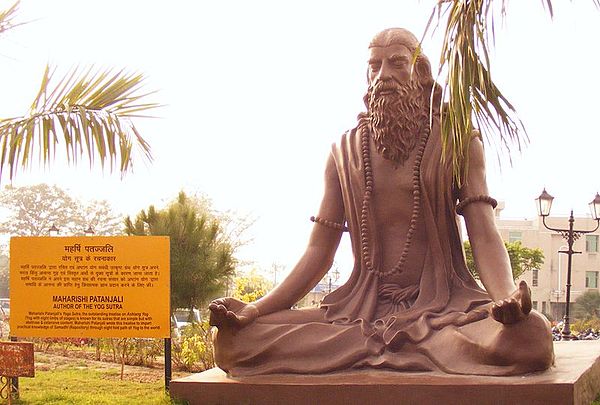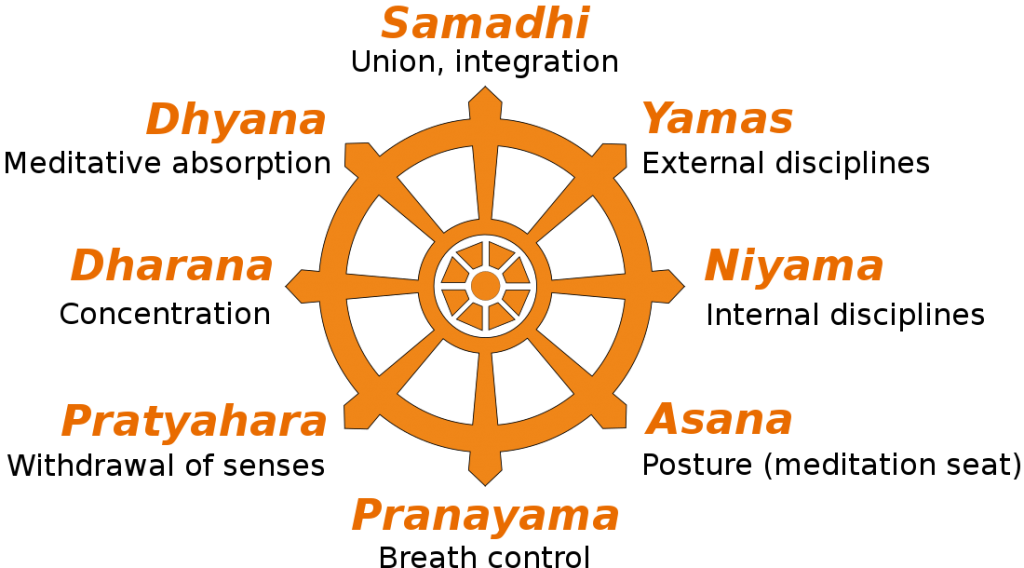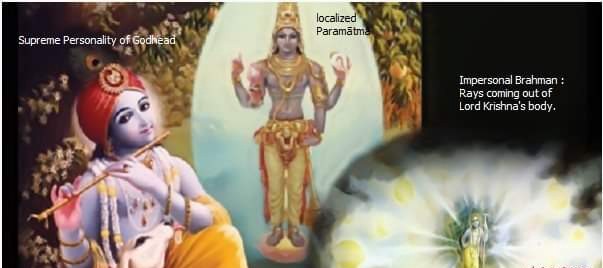What is Dhyana Yoga – We have already discussed the four primary divisions of yoga system. We also discussed in detail about Karma Yoga and Jnana yoga. Let’s discuss Dhyana Yoga here and how bhakti-yoga is superior to Jnana and Dhyana Yoga.
Table of Contents
Dhyana Yoga
Dhyana yoga is popularly known as Aṣṭāṅgayoga or eight-fold mystic perfection which is popularised by the sage Patanjali in recent times. In this yoga, a yogi relieves himself from all engagements by the regulative processes of meditation, concentration, sitting postures, blocking the movements of the internal circulation of air, etc.

Kṛṣṇa describes the process of dhyana yoga in the sixth chapter of Bhagavad Gita as-
BG 6.11-12 : To practice yoga, one should go to a secluded place and should lay kuśa grass on the ground and then cover it with a deerskin and a soft cloth. The seat should be neither too high nor too low and should be situated in a sacred place. The yogī should then sit on it very firmly and practice yoga to purify the heart by controlling his mind, senses and activities and fixing the mind on one point.
BG 6.13-14: One should hold one’s body, neck and head erect in a straight line and stare steadily at the tip of the nose. Thus, with an unagitated, subdued mind, devoid of fear, completely free from sex life, one should meditate upon Me within the heart and make Me the ultimate goal of life.
BG 6.20-23: In the stage of perfection called trance, or samādhi, one’s mind is completely restrained from material mental activities by practice of yoga. This perfection is characterized by one’s ability to see the Self by the pure mind and to relish and rejoice in the Self. In that joyous state, one is situated in boundless transcendental happiness, realized through transcendental senses. Established thus, one never departs from the truth, and upon gaining this he thinks there is no greater gain. Being situated in such a position, one is never shaken, even in the midst of greatest difficulty. This indeed is actual freedom from all miseries arising from material contact.
The eightfold yoga mysticism is automatically practiced in Kṛṣṇa consciousness because the ultimate purpose is served. There is a gradual process of elevation in the practice of yama, niyama, asana, pranayama , pratyahara, dharana, dhyana and samadhi as done in astanga yoga. All the benefits of astanga yoga are obtainable in bhakti yoga but bhakti yoga promises highest goal of human life — the spontaneous attraction for Lord
Kṛṣṇa.

Conclusion
It has been stated in Srimad Bhagavatam 1.2.11 that the Absolute Truth can be realized in three stages, Brahman, Paramatma and Bhagavan
vadanti tat tattva-vidas
tattvaṁ yaj jñānam advayam
brahmeti paramātmeti
bhagavān iti śabdyate
Translation: Learned transcendentalists who know the Absolute Truth call this non dual substance Brahman, Paramātmā or Bhagavān.

If you perform jnana-yoga, you get the realization of Brahman, performing dhyana yoga gives you Paramatma realization and by performing bhakti-yoga, you get Bhagavān realization. So bhakti yoga is superior to other forms of yoga because you get the highest realization of the Absolute Truth, i.e., God as a person, Bhagavān. God is a supremely divine person, and that’s what you realize when you become His devotee. So finally everybody, whether he is a dhyana yogi, jnana Yogi, or karma yogi, sooner or later has to enter into bhakti yoga because the brahman and paramatma realizations are incomplete. The absolute truth realization is complete only when you realize Him as the supreme person by bhakti yoga.
